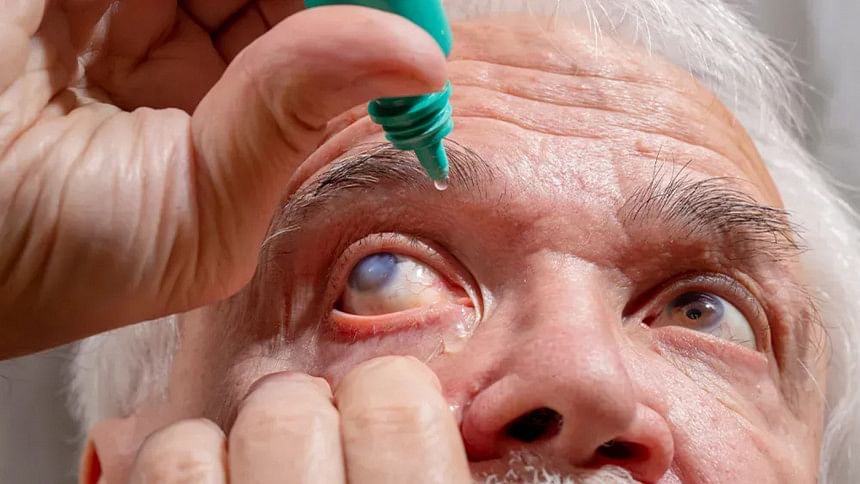Halt glaucoma progression by regular eye exams

Glaucoma is an eye or ocular disease that slowly damages the optic nerve that connects the eye and the brain, where the pressure inside the eye is an important modifiable factor. Intraocular pressure increases when there is any obstruction in the normal pathway of ocular fluid drainage.
Primary glaucoma is of two types:
1. open-angle glaucoma (obstructed drainage canal)
2. angle-closure glaucoma (narrowing of the drainage angle)
Secondary glaucoma develops as a complication of other visual disorders.
Primary open-angle glaucoma is more common and usually goes undiagnosed in the early stages, as most patients fail to notice any change in their vision. This is because, initially, there is a loss of peripheral sight without any involvement of the central vision, which allows detailed visualisation.
However, with the advanced stages of the disease affecting the central vision, the patient becomes aware of the visual impairment, and without proper treatment, it could lead to irreversible blindness. But there is nothing to worry about, as you can preserve your vision with regular visits to an ophthalmologist for a detailed eye examination, which will facilitate early detection and treatment. This is the single best way to prevent open-angle glaucoma, which has very few warning signs or symptoms before the damage has ensued.
On the contrary, patients with angle-closure glaucoma may experience intermittent headaches, eye pain, and halos around light. It is possible for an acute attack to happen, which can cause excruciating eye pain, headaches, blurry vision, and even nausea and vomiting.
Although everyone is at increased risk for glaucoma, there are certain groups at higher risk than others. These include the following:
• People aged over 40 years
• Raised intraocular pressure
• Family history of glaucoma
• Steroid users
• Medical history of diabetes or hypertension
• Other eye problems like refractive errors, corneal thickening, etc.
• Eye injury or previous eye surgeries
The American Academy of Ophthalmology suggests that people who are at risk for glaucoma have eye exams according to the schedule given below:
• Ages 40 to 54: every 1 to 3 years
• Ages 55 to 64: every 1 to 2 years
• Ages 65 and older: every 6 to 12 months
Your eye doctor will place a machine called a "slit lamp" in front of you on which you must rest your chin for a detailed eye exam. He will use different hand-held devices to measure the inner eye pressure, angle in the eye, corneal thickness, and examine the shape and colour of the optic nerve. These are painless procedures, and based on their results, your doctor will advise you regarding the next best step.
In conclusion, regular eye exams are crucial for halting the progression of glaucoma, a potentially sight-threatening condition. Whether it is primary open-angle or angle-closure glaucoma, early detection through comprehensive eye exams allows for timely intervention and management, preserving vision and preventing irreversible blindness.
By adhering to the recommended screening schedule, especially for those at higher risk, individuals can take proactive steps towards maintaining their eye health and overall well-being. Do not wait for symptoms to appear; prioritise your vision with regular visits to an ophthalmologist and safeguard your sight for the future.
Dr Manzia Noor works at Comilla Medical College. E-mail: [email protected]

 For all latest news, follow The Daily Star's Google News channel.
For all latest news, follow The Daily Star's Google News channel. 



Comments